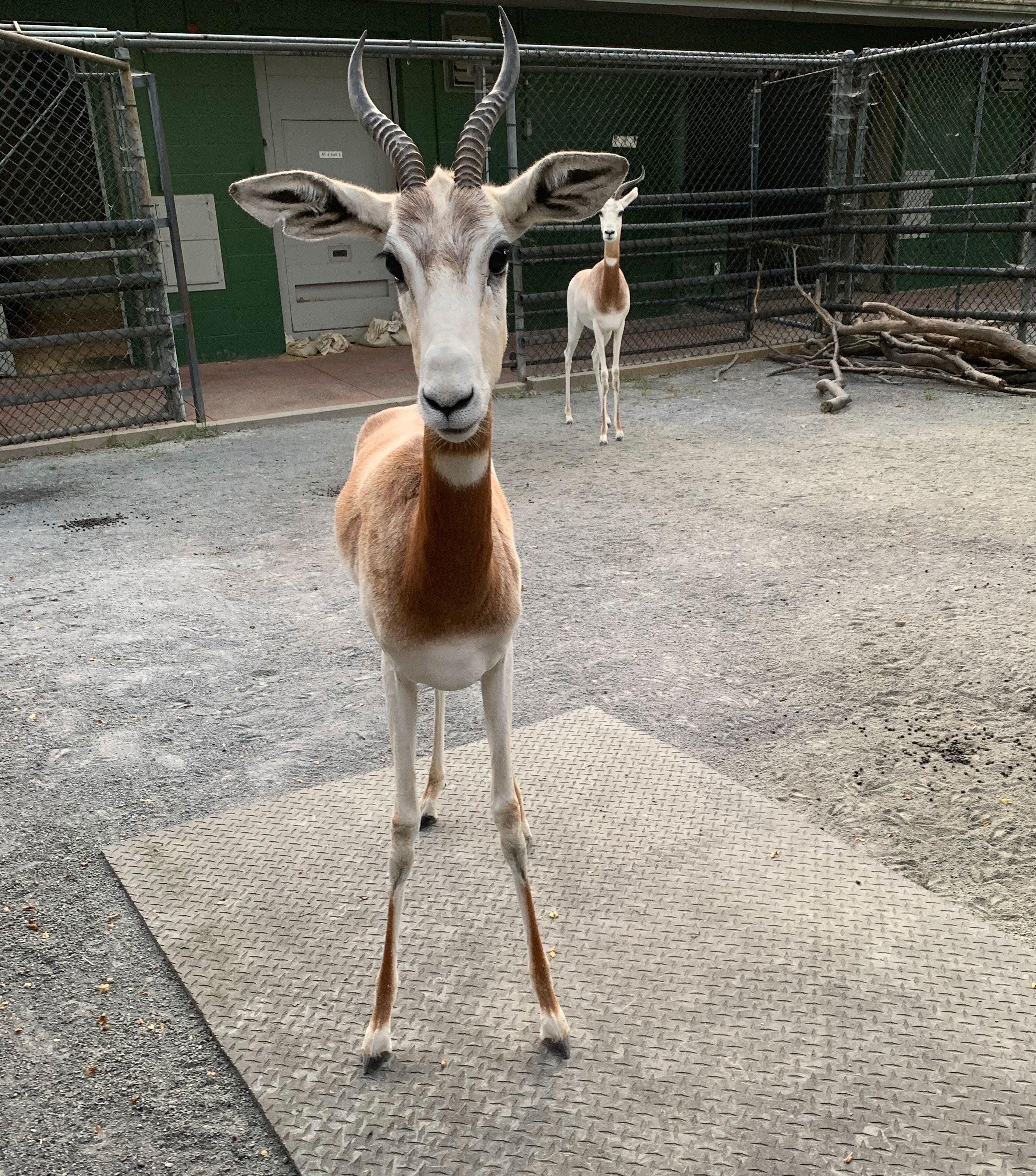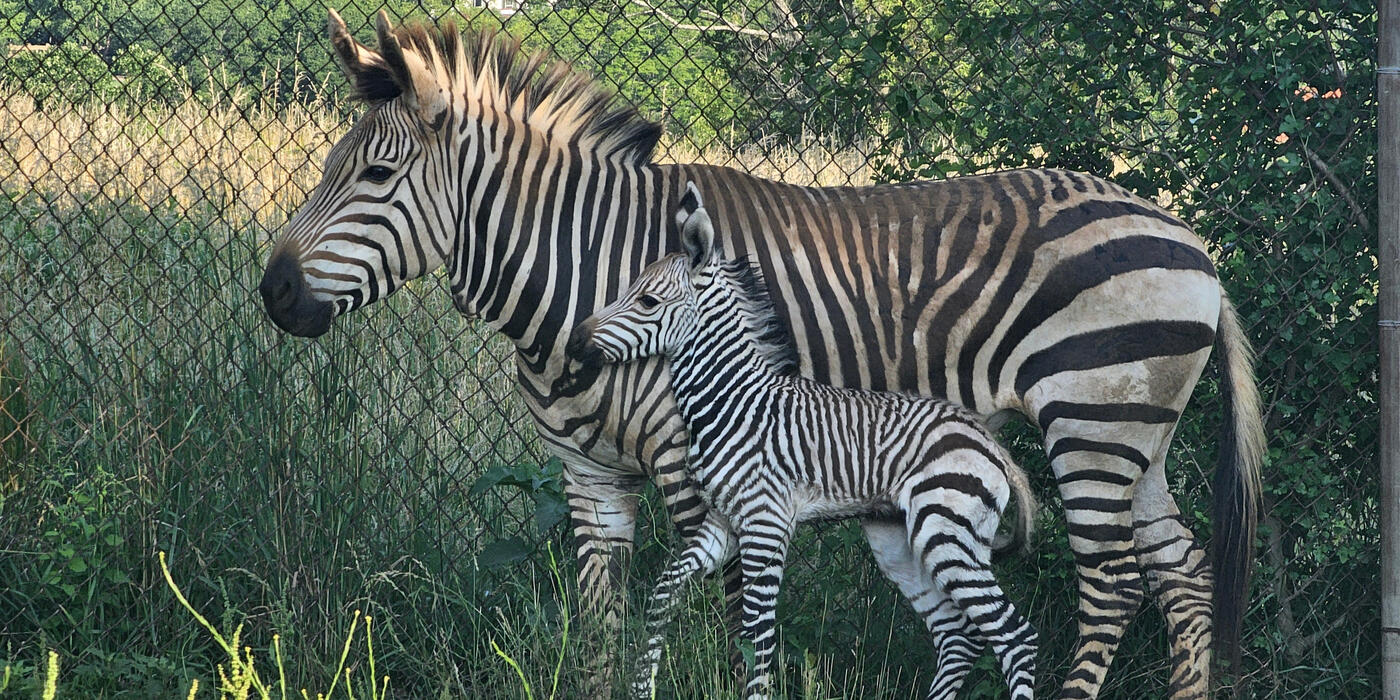How Do You Weigh a Gazelle?

How do you get an elephant to exercise, safely introduce two songbirds or prepare a cheetah for a veterinary exam? In this series, get an insider’s look at how animal keepers use activities, food, training and toys to care for the Smithsonian’s National Zoo’s animals. Find out how enrichment stimulates the senses, why training builds trust, and how keepers come up with new ways for animals to explore and use their natural behaviors each day.

We have all seen the videos — a slender, long-limbed antelope lowers her head to take a sip from a watering hole, ears pitched forward. A small sound, the snap of a twig, and the gazelle is immediately on high alert, perhaps even bounding away within seconds. Gazelles are known to be flighty, nervous prey animals but keeping track of an animal’s weight is an important part of animal care. So, how does a keeper like me convince a gazelle to step onto a scale to be weighed?
Sometimes, we can use an animal’s instincts to bring about a desired behavior. Male and female dama gazelles have horns and will occasionally spar, playfully battling by lowering their heads and rushing at one another. Though capable of causing damage, a gazelle’s instincts tell it that running away, rather than fighting, is its best chance at survival. As keepers, this flight instinct is helpful when we need gazelles to move somewhere, such as inside their barn. We can enter their enclosure and gently herd them where they need to go.
More complicated behaviors, like stepping onto a scale, require training. If our gazelles voluntarily participate in this health check, the experience is less stressful for everyone. Two female dama gazelles live here at the Smithsonian’s National Zoo — Amaya and her mother Fahima. Amaya is smaller than her mother and has a more pronounced reddish-brown stripe extending down her rear. Fahima is already trained to step onto a scale, so it was recently Amaya’s turn to learn.

Though a gazelle’s flight response can be helpful in some situations, it also makes the trust between a keeper and a gazelle that much more important. To make training sessions a rewarding experience, we use positive reinforcement. This means rewarding the behaviors that we want to see and ignoring undesired behaviors. Our nutrition department provides us with a variety of healthy snacks that we can offer Amaya as training rewards outside of her regular diet.
They make a variety of biscuits for herbivores, including cinnamon flavored, banana flavored and some that have a faint apple taste. Amaya’s favorites are the banana biscuits. When she sees me coming with a yellow bucket that she knows holds biscuits, she follows me around the holding yards until I enter for her training session!
Amaya was used to seeing her mother step onto the scale that we use to weigh gazelles. It’s a platform about 2 inches off the ground, topped with a mat for added traction. While this may seem innocuous, a gazelle’s instincts tell it that danger could be hiding around any corner — even in the 2-inch gap under the scale. So, step one in getting Amaya scale trained was to remove the scale entirely! I wanted to get her comfortable with my presence first.
To begin, I introduced the concepts of a bridge and a reward. A bridge is a sound or word that helps to connect a behavior with a reward. When training an animal, it can be difficult to establish the exact behavior that we want to see. Timing is incredibly important, and using a bridge helps pinpoint the behavior we want an animal to perform. For Amaya’s bridge, I used the word “good” and paired it with a snack for a reward.
Amaya’s first day of training was pretty easy. I would approach her, say “good” and then offer her a treat immediately after. I did this a few times throughout the day, so she would begin to associate the word “good” with getting a treat. The next step was to shape her behavior. I began rewarding Amaya for stepping closer to me. Every time she approached me, I would give her the bridge and the reward. Then, I would move to a new spot in her yard and wait for her to approach again.
Next, I began to incorporate the mat that normally lays on top of the scale. I would stand to one side of the mat and have Amaya approach me from the other side. If she stepped onto the mat, she heard “good” and received even more treats! Once she was comfortable stepping onto the mat in front of me, I started to add more pieces of the scale, so it progressively got taller.

After a few weeks of training came the moment of truth. Amaya successfully stepped onto the scale and waited there for a moment, then received snacks as a reward. She was almost 2 years old, and I was finally able to weigh her. That day, Amaya weighed 44.5 kilograms, or about 98 pounds. That’s a little small for her age, but she has always been on the smaller side.
Our gazelles are part of a program managed by the Association of Zoos and Aquariums, called the Species Survival Plan, which manages all dama gazelles in accredited zoos as a single population. As part of this plan, Amaya will move to another zoo in the spring to hopefully breed and produce valuable offspring for the dama gazelle population. Thanks to Amaya’s training, her new keepers should have no issues working with her and monitoring how she adjusts to her new environment.
Want to help replenish toys, puzzle feeders and training tools that are a bit run-down yet well loved by the Zoo’s animals? Donate to the Enrichment Trunk. Your support directly benefits the animals at the Smithsonian’s National Zoo and Conservation Biology Institute.
Related Species:



